I noticed her nails first. Kelly green. But that they were resting on a bright orange purse and dazzling within an arm’s reach in the vibrant morning sunlight was what made me react almost subconsciously. I reached into my side bag and extracted a small and battered Sony digital camera I’ve been carrying with me for the past four years. Putting it into my lap, I checked the settings: Automatic, at ISO 400. Discreetly, I pointed the lens at the young woman’s hands, squeezed off one shot. But when I looked at the preview screen, I was disappointed to see her hand was not in focus. And then the woman woke up and the sunlight disappeared behind the fast moving buildings. Damn – I had missed a shot!
As she stood up to depart, she placed one gaudy thumb on my arm rest, as if to taunt me. Baited, I adjusted my camera to macro setting and was at least able to grab this consolation shot. But it didn’t match another shot I had made the day before, of a young woman’s hands resting on her forehead. Neon yellow nails had made that shot.

I was on my daily commute from my residence town to Washington, D.C.’s Union Station, on Maryland’s MARC commuter train. From the station, I’d join the thousands trudging forward toward various portals, mine being that of the Metro System, on to the Red Line and my work at the U.S. State Department. As a career Foreign Service officer, I delighted in my surreptitious pastime of documenting exotic and intriguing scenes and faces around the world. Now, on a domestic diplomatic assignment for the past two years, I could see my fellow citizens in the same light as abroad, equally beguiling, and I often thirsted to capture and share my slant on people and events. The images soon developed into a project, which I dubbed, “Ghost Riders”. This was because most often the people who attracted my shutter finger were dozing off en route to or from their DC jobs.
When I mentioned my new project to my older daughter, she expressed disdain. “That’s creepy,” she declared. Thus, even though I was photographing in public places, I decided to provide my subjects with a screen of anonymity by enlisting a series of Photoshop filters and running each image through them. I was delighted by the results, which were both minimalistic and detailed, and reminded me of the solarization experiments I had done in the darkroom decades earlier. Daughter, upon seeing these a year later, was not entirely convinced of the resulting portraits’ anonymous quality, however. “Still intrusive,” she concluded.
Out on the streets of our U.S. of A., a photographer can pull out a camera or smart phone and direct it virtually everywhere without hesitation. Our western culture is unique from most others in the world, in that the public is considered fair game for the lens. We have the law on our side in this respect. Restrictions are few, but include not directing a lens into the windows of a residence or, more horridly, up a dress.
From 2016 to 2018, with my office just a block from the White House, I would sometimes walk down to Lafayette Square and point my camera at participants of the ubiquitous and quotidian anti-Trump protesters. While I was working in Saudi Arabia, however, I was sternly warned to exercise caution in making photos in public, lest any woman’s face be thus captured. This transgression was seen as a violation of “hijab,” which is not only an article of clothing imprisoning a woman’s or girl’s head, but the Muslim directive for men to lower their gaze when in the presence of a woman. In that misogynistic culture, I was able to get around the photographic proscriptions only by carefully defocusing the plane where the  females were, or moving to an area where the women’s faces were obscured. This is a country where women are often made by husbands to literally cover every square inch of their body, nothing to do with Islam, but rather a cultural atavism. Hijab as a directive is the pinnacle of privacy. Once, at an art gallery in Jeddah, I was loudly admonished by one of the Kingdom’s innumerable and ridiculously haughty princesses, in the direction of whom I inadvertently pointed my lens.
females were, or moving to an area where the women’s faces were obscured. This is a country where women are often made by husbands to literally cover every square inch of their body, nothing to do with Islam, but rather a cultural atavism. Hijab as a directive is the pinnacle of privacy. Once, at an art gallery in Jeddah, I was loudly admonished by one of the Kingdom’s innumerable and ridiculously haughty princesses, in the direction of whom I inadvertently pointed my lens.
Years ago, as a teenager, I was threatened by military police and scolded for taking a photo at the San Pedro Sula Airport in Honduras, simply for taking a scene which might have included some military jets parked by the tarmac. “Who are they to tell me what to photograph?” I thought, and rebelliously snuck a few more shots by letting the camera dangle at my chest and using the self-timer.
And once, in a park in Atlanta, a mother lectured to me for my seeming inclusion of her toddler child in a photo. “You might be some weirdo who takes kid’s pictures!” she exclaimed, not swayed by my declarations of the legality of my lensings.
So, a photographer has to live a life of constant inspection and introspection, constantly aware of the rules and norms of the particular environment. Since I’ve been handling a camera at age 14, when I convinced my mother to let me take a city bus to a political convention for a few days, I think I have pretty much internalized the dos and don’ts of the photographic-psychological-sociological paradigm.
My favorite photo of this genre is one I took in a slum in Riyadh, Saudi Arabia, in 2016. As a U.S. embassy press attaché and information officer, I was in the city to conduct diplomatic work relating to an official visit of President Barack Obama, but I had a few hours free afterwards. I changed into some well-worn jeans and a t-shirt, and, from my palatial hotel, convinced a taxi driver to take me to the most humble part of the city. He was alarmed when I instructed him to just leave me there.
 For a few hours, I enjoyed walking around the deteriorating houses and buildings and hailing the locals in Arabic. Then, at a distance, I saw a small group of young boys meandering about. I followed them for a few paces, and when I noticed they had climbed up to a house entrance, I quickly prepared my camera’s focus and aperture for what I previsualized; I had my favorite wide-angle lens, a 20mm Nikon, on my D-610. In Arabic, I asked the kids, “Hey, would you like a sweet to eat?” When they turned and looked at me, I raised my camera for a split second and made the shot.
For a few hours, I enjoyed walking around the deteriorating houses and buildings and hailing the locals in Arabic. Then, at a distance, I saw a small group of young boys meandering about. I followed them for a few paces, and when I noticed they had climbed up to a house entrance, I quickly prepared my camera’s focus and aperture for what I previsualized; I had my favorite wide-angle lens, a 20mm Nikon, on my D-610. In Arabic, I asked the kids, “Hey, would you like a sweet to eat?” When they turned and looked at me, I raised my camera for a split second and made the shot. 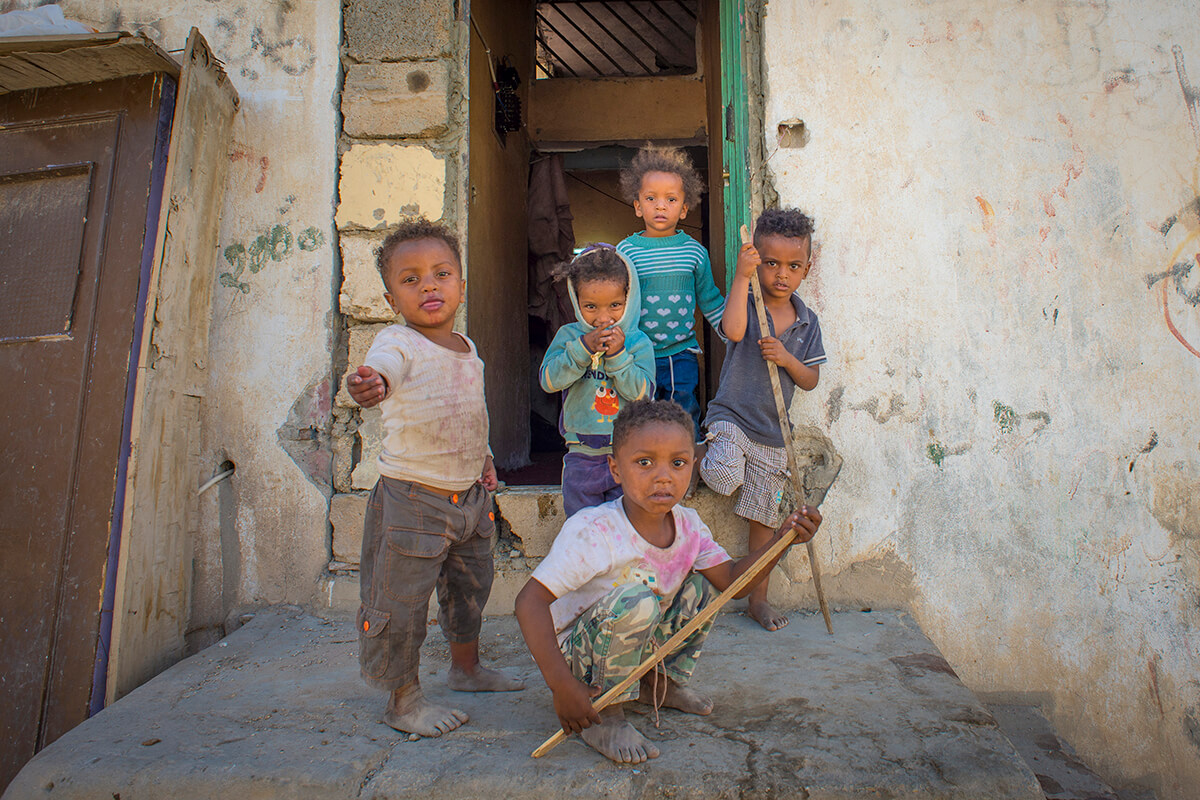
I then gave them some candies I always carry in my bag. I cherish the resulting image, with the varied expressions and gritty ambience. Hardened street warriors – yet so vulnerable!
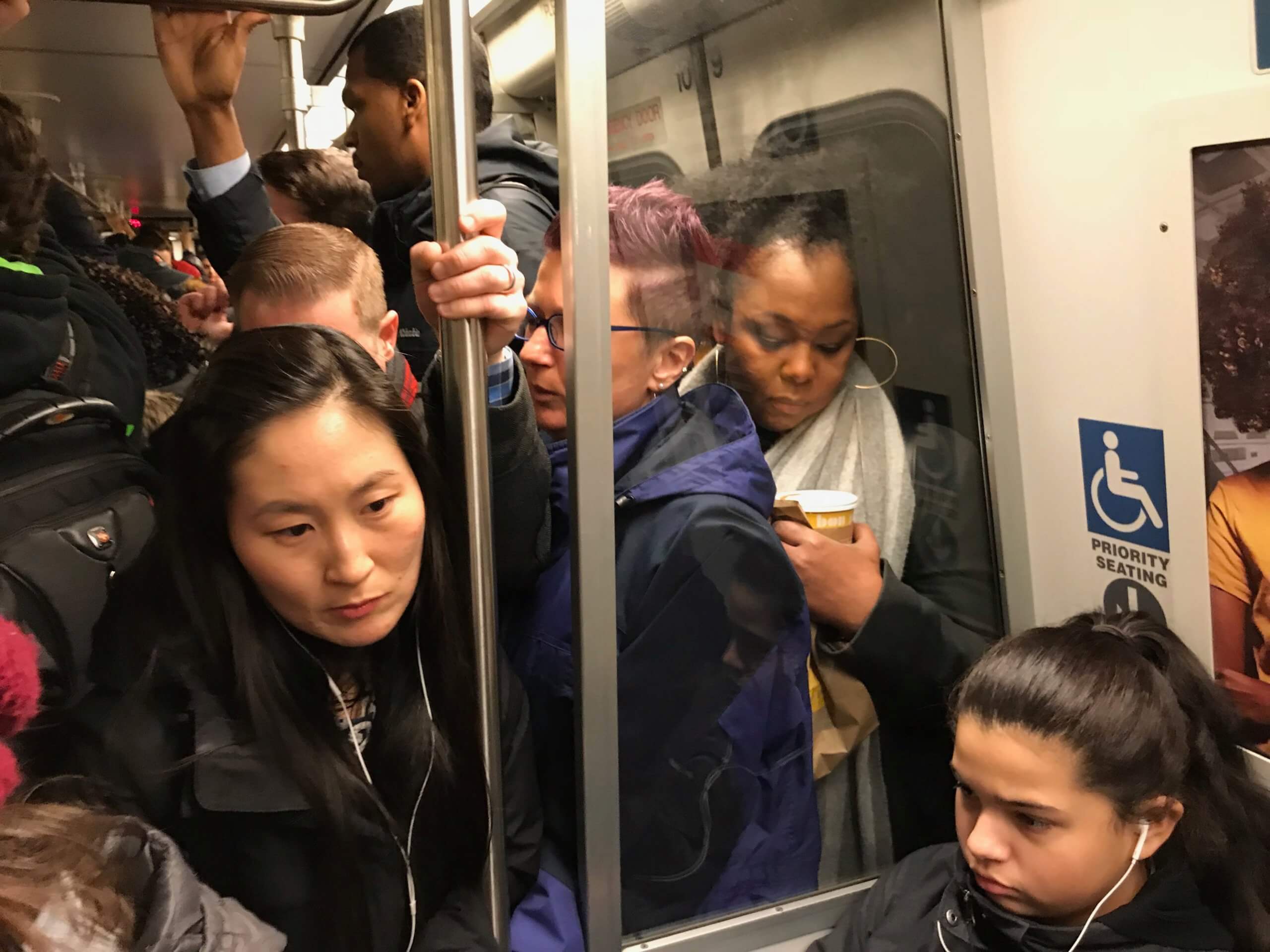
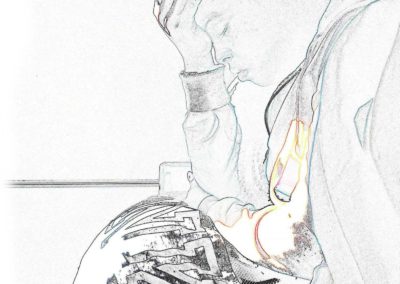
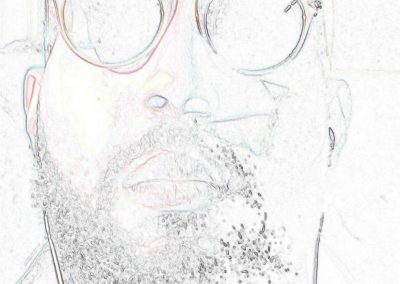



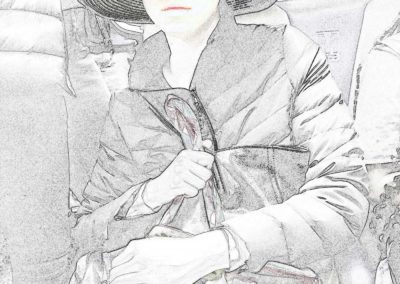
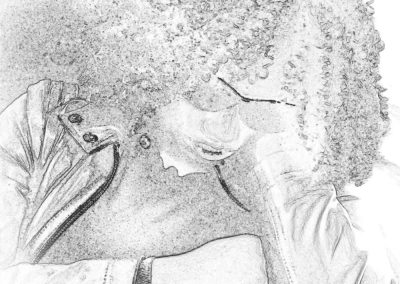
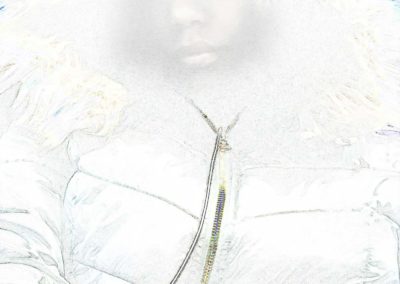
Awesome commentary and even more awesome photos!